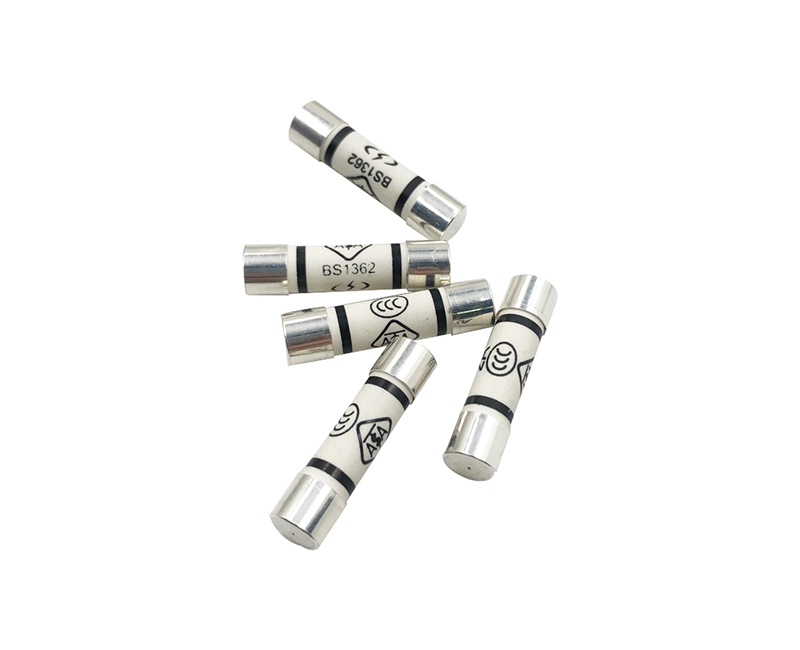Analysis of factors causing fuse breakage
1. The concept of fuses
Fuse, also known as current fuse, is defined as a "fuse link" in the IEC127 standard. When a circuit malfunctions or is abnormal, the current continues to rise, and the rising current may damage some important or valuable components in the circuit, or even burn out the circuit and cause a fire. If the fuse is correctly installed in the circuit, it will automatically melt and cut off the current when the current abnormally rises to a certain height and heat, thus protecting the safe operation of the circuit.
2. Working principle of fuse
When current flows through a conductor, it will generate heat due to the presence of a certain resistance in the conductor. And the heat generation follows this formula:
Q=0.24I2RT
Among them, Q is the heat generation, 0.24 is a constant, I is the current flowing through the conductor, R is the resistance of the conductor, and T is the time for the current to flow through the conductor; Based on this formula, we can easily see the simple working principle of the fuse.
When the material and shape of the fuse are determined, its resistance R is relatively determined. When current flows through it, it generates heat, and as time goes on, its heat generation also increases. The magnitude of current and resistance determines the rate of heat generation, while the construction and installation of fuses determine the rate of heat dissipation. If the rate of heat generation is lower than the rate of heat dissipation, the fuse will not melt. If the rate of heat generation is equal to the rate of heat dissipation, it will not melt for a considerable period of time. If the rate of heat generation is greater than the rate of heat dissipation, then the amount of heat generated will increase. Also, because it has a certain specific heat and mass, the increase in heat is reflected in the temperature rise. When the temperature rises above the melting point of the fuse, the fuse melts. This is the working principle of fuses. We should know from this principle that when designing and manufacturing fuses, you must carefully study the physical properties of the materials you choose and ensure that they have consistent geometric dimensions. Because these factors play a crucial role in determining whether the fuse can function properly. Similarly, you must install it correctly when using it.
3. Analysis of factors causing fuse breakage
The essence of fuse melting is that current flows through the fuse, causing it to heat up. If the heat cannot be dissipated in time, the fuse will continue to heat up until it reaches its melting point and then melt and disconnect. In summary, it mainly includes the following points:
(1) Overload.
The household electricity load is too high, causing overload and causing the fuse to melt. This situation is particularly prone to occur when using air conditioners, electric heaters, or adding other high-power appliances.
(2) Poor contact.
Although some families choose fuses reasonably and the load is not too high, they may "trip" when using high-power appliances such as air conditioners, electric heaters, and rice cookers. The reason may be that during the installation and replacement of fuses, the fuses have poor contact with the plug screws, causing ignition and heating, which oxidizes and "burns" the screws that fix the fuses on the porcelain plug and switch
(3) Short circuit.
If the fuse is replaced and "trips" as soon as it is closed, it may be a short circuit. Firstly, there is a short circuit in the circuit. Secondly, there is a short circuit in the load, such as the plugs of commonly used high-power appliances such as electric kettles and rice cookers, as well as commonly used mobile appliances and inferior appliances, which are prone to short circuit faults.
(4) Pulse.
When the circuit starts or the power supply is unstable, a momentary high current causes the fuse to break; In addition, if the screws are not tightened or the fuse is damaged during installation, it can also cause the fuse to melt.
Read recommendations: